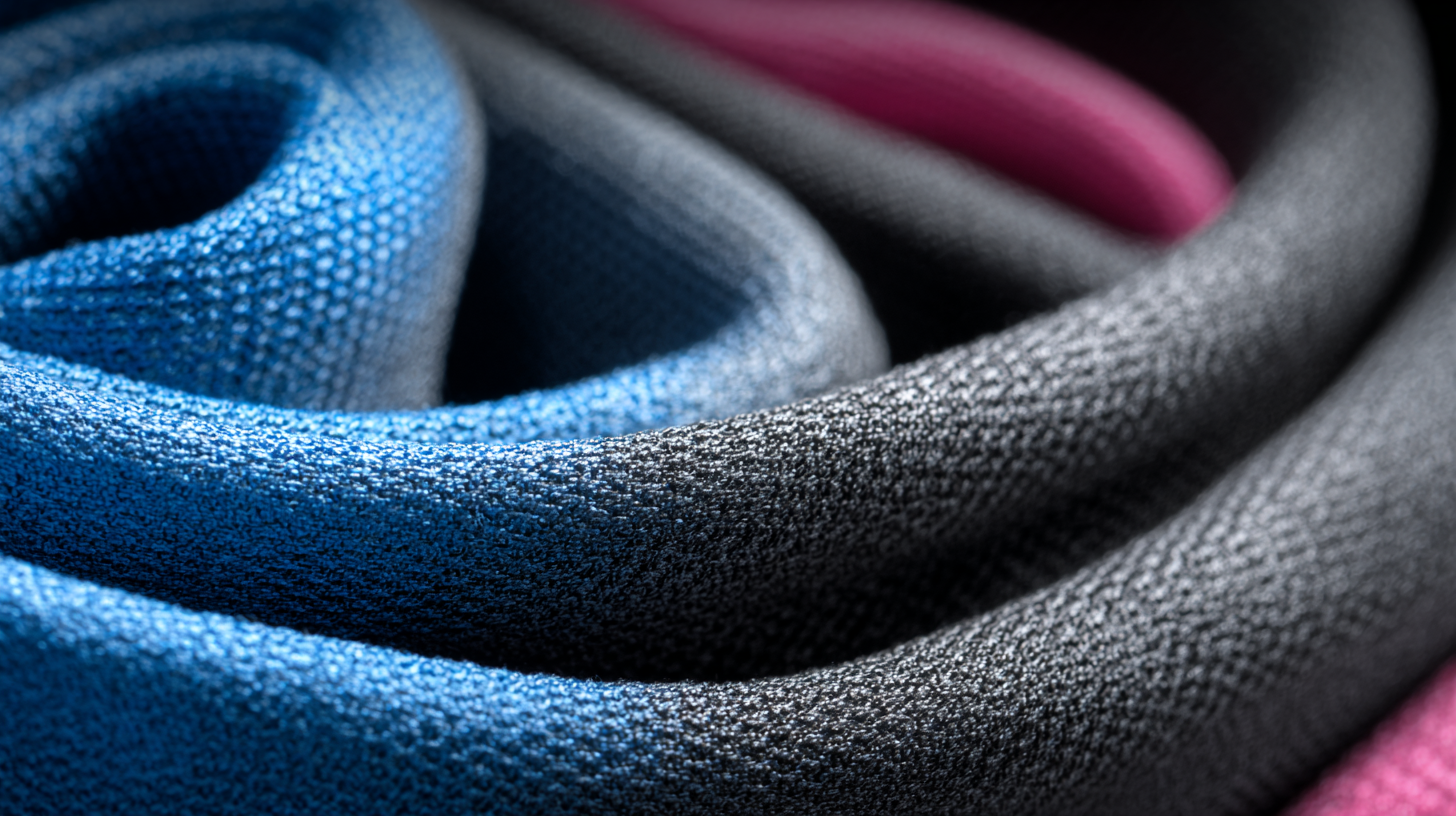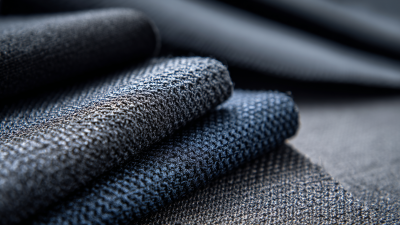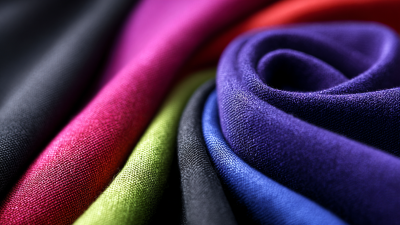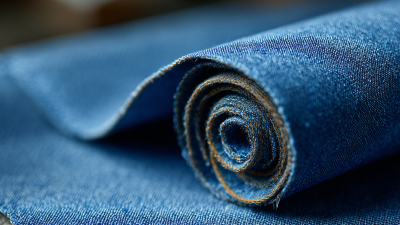 In the realm of sportswear, the significance of Stretch Fabric has gained traction, revolutionizing athletic performance and comfort. According to a report by Allied Market Research, the global activewear market is projected to reach $547 billion by 2024, largely driven by advancements in materials technology. Stretch Fabric, characterized by its elasticity and ability to conform to the wearer's movements, plays a critical role in this growth. Research shows that garments made with high-quality stretch materials can enhance an athlete's performance by promoting greater freedom of movement and reducing muscle fatigue. Furthermore, a study published in the Journal of Sports Sciences highlights that the use of stretchable fabrics can significantly improve overall comfort, leading to increased endurance during physical activities. As athletes seek gear that supports their performance, understanding the science behind Stretch Fabric becomes essential for both manufacturers and consumers alike.
In the realm of sportswear, the significance of Stretch Fabric has gained traction, revolutionizing athletic performance and comfort. According to a report by Allied Market Research, the global activewear market is projected to reach $547 billion by 2024, largely driven by advancements in materials technology. Stretch Fabric, characterized by its elasticity and ability to conform to the wearer's movements, plays a critical role in this growth. Research shows that garments made with high-quality stretch materials can enhance an athlete's performance by promoting greater freedom of movement and reducing muscle fatigue. Furthermore, a study published in the Journal of Sports Sciences highlights that the use of stretchable fabrics can significantly improve overall comfort, leading to increased endurance during physical activities. As athletes seek gear that supports their performance, understanding the science behind Stretch Fabric becomes essential for both manufacturers and consumers alike.
Stretch fabrics are essential in sportswear, offering a range of types, each with unique properties tailored to enhance athletic performance and comfort. The most common stretch materials include elastane (also known as spandex or Lycra), nylon, and polyester blends. Elastane is renowned for its excellent elasticity, allowing garments to stretch in multiple directions, which is crucial for activities requiring a wide range of motion, such as gymnastics or running. This material not only provides flexibility but also retains its shape, ensuring that sportswear remains fitted even after repeated use.
Nylon and polyester blends, on the other hand, contribute to moisture-wicking properties, making them ideal for high-intensity workouts. These fabrics pull sweat away from the skin, keeping athletes dry and comfortable during exercise. Additionally, they often feature enhanced durability, resisting wear and tear from rigorous activities. Understanding the different types of stretch fabrics and their characteristics allows athletes and consumers to make informed choices that align with their performance needs and personal comfort preferences, ensuring an optimal experience in sportswear.
Elastane, commonly known by its brand name Spandex, is a significant component in modern sportswear that enhances flexibility and comfort. Its remarkable ability to stretch up to five times its original length makes it an essential fabric for athletes and fitness enthusiasts alike. This synthetic fiber allows garments to move with the body, preventing restrictions that could affect performance. Additionally, elastane’s lightweight nature adds to the overall comfort, allowing for breathability and moisture management during intense workouts.

When choosing sportswear, consider opting for garments with a blend of elastane. This will ensure that your attire conforms to your body shape while providing the necessary support. Look for labels specifying a higher percentage of elastane for increased stretch and recovery. It’s also beneficial to select clothing that features flatlock seams to minimize chafing and irritation during movement.
For maximizing the lifespan of your elastane-rich garments, always follow the care instructions. Washing in cold water and avoiding fabric softeners can help maintain the stretchability of the fabric. Additionally, air drying instead of using a dryer can prevent heat damage, keeping your sportswear looking and performing at its best for longer.
Stretch fabrics have become a cornerstone in the development of modern sportswear, particularly due to their exceptional moisture management capabilities. These innovative materials are engineered to wick sweat away from the body, keeping athletes dry during intense physical activities. For instance, a standout product in recent evaluations dried completely in just 30 seconds, showcasing the rapid moisture-wicking technology that many athletes crave. This is vital, as maintaining dryness not only enhances comfort but also prevents chafing and irritation, allowing for longer and more enjoyable workouts.
Research highlights that effective moisture management in fabrics is largely attributed to their construction. Fabrics containing advanced synthetic fibers, such as polyester blended with spandex, ensure a lightweight, durable clothing option that moves with the body. Studies indicate that an effective moisture-wicking fabric can significantly improve athletic performance by optimizing body temperature regulation during exercise. A recent report noted that over 70% of athletes preferred garments that feature moisture-wicking properties, underscoring the importance of these features in selecting workout attire. In a world where comfort and performance are paramount, the role of stretch fabrics in sportswear cannot be overlooked.
| Feature | Description | Benefits | Applications |
|---|---|---|---|
| Moisture Wicking | Ability of fabric to pull moisture away from the body | Keeps athletes dry and comfortable | Running, cycling, team sports |
| Breathability | Allows air to circulate, helping regulate body temperature | Enhances comfort during intense activities | Outdoor sports, high-intensity workouts |
| Elasticity | Ability to stretch and recover to original shape | Provides freedom of movement | Yoga, gymnastics, athletic training |
| Lightweight | Fabric that is light in weight but still durable | Reduces fatigue during physical activity | Travel, casual wear, sportswear |
| Quick-Drying | Fabric that dries quickly after moisture exposure | Prevents chafing and discomfort | Triathlons, swimming, water sports |
The increasing temperatures due to climate change have significantly impacted consumers' preferences for sportswear, leading to a growing demand for breathable and temperature-regulating fabrics. These innovations are essential for enhancing comfort and performance during physical activities. As athletes and fitness enthusiasts seek to optimize their performance, the need for materials that allow moisture-wicking, airflow, and temperature control has become paramount.
In response to this demand, the smart textiles market is projected to expand dramatically, reaching approximately $13.36 billion by 2031, with a compound annual growth rate of 22.16%. Consumers are increasingly drawn to high-tech fabrics designed to keep them cool, even in scorching temperatures. Brands are integrating technologies such as UV protection and advanced cooling systems to ensure their products not only perform well under extreme conditions but also offer stylish solutions for everyday wear. This shift towards functional yet fashionable sportswear marks a significant trend, opening new avenues in the apparel market.
 Stretch fabrics play a crucial role in the performance and comfort of sportswear, particularly through their compression and supportive fits. Compression garments are designed to snugly fit the body, providing graduated pressure that helps enhance blood circulation. This increased blood flow can lead to better oxygen delivery to muscles, ultimately improving endurance and reducing fatigue during physical activities. The support these fabrics offer allows athletes to perform at their best while minimizing the risk of injury, making them an essential choice for both training and recovery.
Stretch fabrics play a crucial role in the performance and comfort of sportswear, particularly through their compression and supportive fits. Compression garments are designed to snugly fit the body, providing graduated pressure that helps enhance blood circulation. This increased blood flow can lead to better oxygen delivery to muscles, ultimately improving endurance and reducing fatigue during physical activities. The support these fabrics offer allows athletes to perform at their best while minimizing the risk of injury, making them an essential choice for both training and recovery.
Tips for choosing the right compression wear include selecting fabrics that offer moisture-wicking properties to keep you dry during workouts. Look for garments with flat seams to prevent chafing, ensuring comfort during extended periods of wear. Additionally, pay attention to the fit: a well-fitted garment should feel snug yet not restrictive, allowing for a full range of motion.
Incorporating supportive fits into your sports wardrobe can significantly enhance your overall performance. Compression tights or tops can help stabilize muscles, reducing oscillation, which in turn can lead to improved biomechanics. Remember to consider the climate and the type of activity you’ll be engaging in when choosing your compression wear to maximize its benefits.






